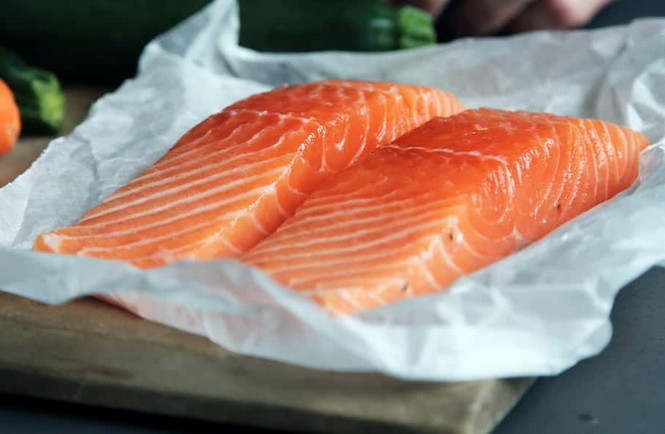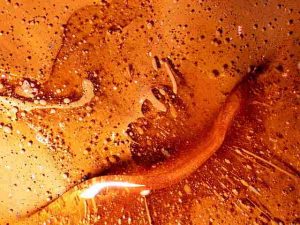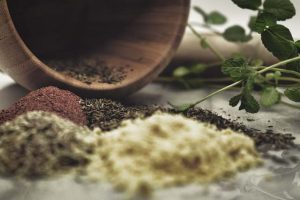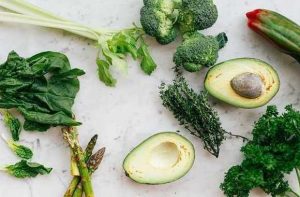What Does Salmon Taste Like: Exploring The Flavor Profile Of This Popular Fish

Salmon is a popular fish that is enjoyed all over the world for its delicious taste and numerous health benefits. It is known for its vibrant pink color, firm texture, and rich flavor.
However, if you have never tried salmon before, you may be wondering what it tastes like. In this article, we will explore the flavor profile of salmon, including its taste, texture, and aroma.
What Does Salmon Taste Like: A Delicate Balance of Sweetness and Umami
Salmon has a unique flavor that is difficult to describe because it combines several different taste sensations. The taste of salmon can vary depending on how it is prepared, but in general, it has a delicate balance of sweetness and umami.
Sweetness
The sweetness in salmon comes from its natural sugars, which give it a slightly sweet taste. This sweetness is most prominent in fresh salmon, which has not been frozen or smoked.
Umami
Umami is the fifth taste sensation, which is often described as savory, meaty, or brothy. Salmon has a subtle umami flavor that comes from its high protein content.
This taste sensation is more pronounced in cooked salmon, especially when it is grilled or roasted.
Other Flavors
In addition to sweetness and umami, salmon also has other flavors that contribute to its overall taste profile, including:
- Saltiness: Salmon naturally contains some salt, which enhances its flavor and helps to preserve it.
- Bitterness: Bitter notes are present in salmon, but they are usually masked by its sweetness and umami.
- Nuttiness: Some people describe a nutty flavor in salmon, which comes from its high fat content.
The Texture of Salmon: Firm and Meaty
In addition to its unique flavor, salmon also has a distinctive texture that sets it apart from other fish. Salmon is firm and meaty, with large flakes that are easy to separate with a fork.
Raw Salmon
Raw salmon has a silky texture that is often described as buttery or creamy. This texture comes from the natural oils in the fish, which give it a smooth mouthfeel.
Cooked Salmon
When salmon is cooked, its texture becomes firmer and meatier. Cooked salmon can be flaky or tender depending on how it is prepared. Grilled or roasted salmon has a chewy texture, while poached or steamed salmon is more tender.
The Aroma of Salmon: Mild and Pleasant
Salmon has a mild aroma that is pleasant and slightly sweet. The smell of raw salmon is not overpowering, and it does not have a strong fishy odor. Cooked salmon has a more pronounced aroma that is similar to its taste, with subtle notes of sweetness and umami.
Read more: What Does Yellowtail Taste Like?
Pros and Cons of Eating Salmon
Salmon is a healthy and nutritious food that is packed with essential vitamins and minerals. However, there are also some potential drawbacks to consider when eating salmon.
Pros
- High in Omega-3 Fatty Acids: Salmon is one of the best sources of omega-3 fatty acids, which are essential for heart health.
- Rich in Protein: Salmon is high in protein, which helps to build and repair muscles.
- Low in Calories: Salmon is relatively low in calories compared to other proteins, making it a good choice for weight management.
- Versatile: Salmon can be cooked in a variety of ways and used in a range of recipes, from sushi rolls to grilled fillets.
Cons
- Environmental Concerns: Some types of salmon are overfished or farmed using unsustainable practices, which can have negative impacts on the environment.
- Contaminants: Farmed salmon may contain contaminants such as PCBs, which can accumulate in the fish and potentially harm human health.
- Cost: Salmon can be more expensive than other types of fish, especially if it is wild-caught or sustainably farmed.
Alternatives to Salmon
If you are looking for a fish with a similar taste to salmon, there are several alternatives to consider:
- Steelhead Trout: This fish is often described as having a milder taste than salmon, but a similar texture.
- Arctic Char: Arctic char has a similar flavor to salmon, but with a milder taste and firmer texture.
- Rainbow Trout: This fish has a mild, nutty flavor that is similar to salmon, but with a lighter texture.
- Sardines: Sardines have a strong umami flavor that is similar to cooked salmon, and they are also high in omega-3s.
How to Cook Salmon: Tips and Tricks
Salmon can be cooked in a variety of ways, from grilling and roasting to poaching and steaming. Here are some tips and tricks to help you get the best results:
- Choose Fresh Salmon: Whenever possible, choose fresh salmon over frozen or smoked salmon- as it will have a fresher taste and firmer texture.
- Season Generously: Salmon can handle bold flavors, so don’t be afraid to season it with herbs, spices, and citrus.
- Don’t Overcook: Overcooked salmon can become dry and tough. To avoid this, cook salmon until it is just cooked through but still moist and tender.
- Try Different Cooking Methods: Experiment with different cooking methods, such as grilling, roasting, or poaching, to find your favorite way of preparing salmon.
How To Cut And Clean Salmon While Using A Fillet Knife For Salmon.
Cutting and cleaning salmon can be a challenge, but with the right fillet knife, it can be a breeze. Here are the steps to follow:
Step 1: Choose the Fillet Knife for Salmon
To effectively cut and clean salmon, you need to have a sharp and flexible fillet knife. The best fillet knife for salmon should have a blade of at least 7 inches, be flexible enough to move effortlessly through the fish’s soft flesh, and have a comfortable grip.
One great option for a best fillet knife is the Wusthof Classic 7-inch Fillet Knife. It has a long, flexible blade that is perfect for cutting through the skin and flesh of salmon, and it’s made with high-carbon stainless steel, so it’ll stay sharp even with frequent use.
Step 2: Prepare the Fish
Before cutting and cleaning the salmon, you need to prep it by removing the scales, head, and guts. Start by removing the scales using a sharp-edged knife or a scaling tool.
Next, cut off the head of the salmon just behind the gills using a sharp chef’s knife.
Then, place the salmon on a cutting board and run a sharp fillet knife along the belly of the fish, just below the head. Push the blade towards the tail, cutting through the fish’s flesh and stopping at the tail.
Step 3: Cut the Fillet
With the belly of the fish opened up, locate the spine and make a cut along it. Angle the blade of the fillet knife at a 45-degree angle towards the head of the fish and slice through the flesh along the backbone, using the spine as a guide.
Once you’ve reached the end of the fish, cut through the base of the ribcage to separate the fillet from the body. Repeat these steps to remove the other fillet from the opposite side of the salmon.
Step 4: Remove the Skin
To remove the skin, lay a fillet skin-side down on a cutting board and, using the Fillet Knife, place the knife at the tail end of the fillet and slide it underneath the flesh.
Holding the skin taut, slowly move the knife along the length of the fillet, keeping the blade as close to the skin as possible without cutting through the flesh.
Repeat this step for the other fillet to remove the skin completely.
Step 5: Clean and Rinse
Finally, clean the salmon fillets thoroughly, removing any remaining blood, bones, or scraps. Rinse the fillets under cold running water and pat them dry using paper towels.
By following these steps and using the fillet knife for salmon, you’ll be able to effectively cut and clean your salmon fillets for any recipe.
Step-by-Step Guide: How to Grill Salmon
Grilling is one of the most popular ways to cook salmon, as it gives it a smoky flavor and crispy skin. Here is a step-by-step guide to grilling salmon:
- Preheat the grill to medium-high heat.
- Brush the salmon fillets with olive oil and season with salt and pepper.
- Place the salmon skin-side down on the grill and cook for 4-5 minutes.
- Use a spatula to gently flip the salmon over and cook for an additional 4-5 minutes.
- Remove the salmon from the grill and serve immediately.
Comparison: Wild vs. Farmed Salmon
When choosing salmon, you may have the option of wild-caught or farmed salmon. Here are some differences to consider:
Wild-Caught Salmon
- Higher in Omega-3s: Wild-caught salmon has higher levels of omega-3 fatty acids than farmed salmon.
- More Expensive: Wild-caught salmon is generally more expensive than farmed salmon.
- Environmentally Sustainable: Wild-caught salmon is considered a sustainable seafood choice, as long as it is harvested responsibly.
Farmed Salmon
- Lower in Omega-3s: Farmed salmon has lower levels of omega-3 fatty acids than wild-caught salmon.
- More Affordable: Farmed salmon is generally less expensive than wild-caught salmon.
- Environmental Concerns: Some farmed salmon are raised using unsustainable practices that can harm the environment.
Tips for Buying and Storing Salmon
When buying salmon, here are some tips to keep in mind:
- Look for Fresh Fish: Choose salmon with firm flesh, bright color, and a fresh smell.
- Check the Label: If buying farmed salmon, look for labels indicating sustainable farming practices.
- Store Properly: Keep salmon refrigerated or frozen until ready to use. Fresh salmon should be used within 1-2 days, while frozen salmon can be stored for up to 6 months.
Conclusion
Salmon is a delicious and nutritious food that has a unique flavor profile of sweetness and umami. Its firm texture and mild aroma make it a versatile ingredient in a range of recipes.
When cooking salmon, consider grilling, poaching, or roasting it to get the best results.
Whether you choose wild-caught or farmed salmon, be sure to purchase it from a reputable source and store it properly to ensure freshness.
FAQs
- Is salmon healthy? Yes, salmon is a healthy food that is high in omega-3 fatty acids, protein, and essential vitamins and minerals.
- Does salmon taste fishy? No, salmon does not have a strong fishy taste. Its flavor is delicate and balanced, with subtle sweetness and umami notes.
- Can I eat salmon raw? Raw salmon can be eaten in sushi or sashimi dishes, but it is important to choose high-quality, fresh fish and handle it properly to avoid foodborne illness.
- What is the difference between Atlantic and Pacific salmon? Atlantic and Pacific salmon have different flavor profiles, with Atlantic salmon being milder and sweeter, while Pacific salmon is richer and more savory.
- How can I tell if salmon has gone bad? Bad salmon will have a sour or off smell, slimy texture, or discolored flesh. If in doubt, it is best to discard it rather than risk foodborne illness.





